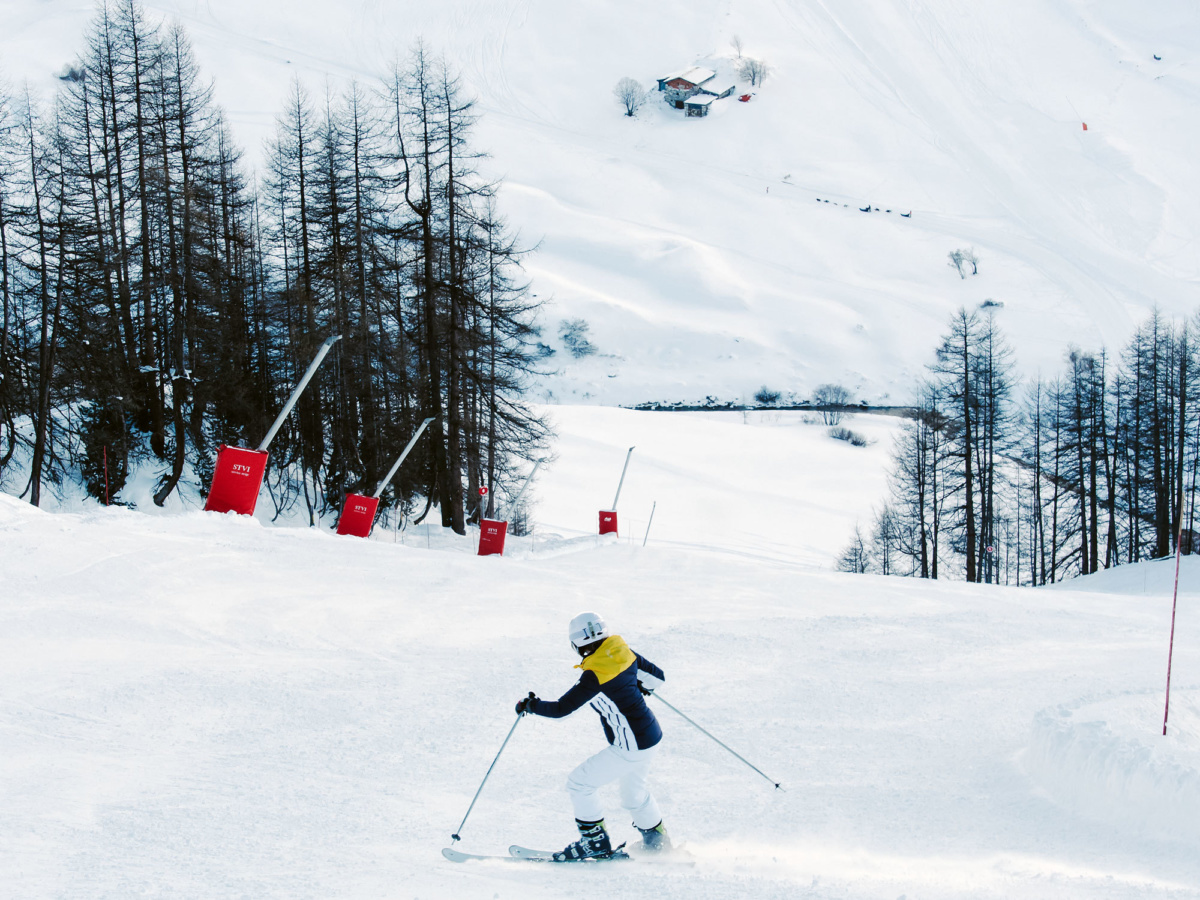Why is my skiing not improving?

Votes:
Getting from Stuck - Bob Sullivan and Herbert Thompson
"Understanding why we reach a plateau can help us stop wasting time on things that we’ve stopped getting value from and focus on other things that leverage our time and energy better”
Setting goals for the start of the season
If you are like me, you may look forward to the start of the coming ski season with renewed optimism with the dreams of taking your skiing to the next level.
Initially, you may implement some of the changes you made as a result of off-season workouts. Once you work out the kinks in your first few runs, as a result of your investment in your off-season training, you may begin to see evidence of your improved skiing. As quickly as these gains come, they seem to fade into old patterns. Why does this happen?
Understanding the learning process
If you experienced this kind of quick improvements in your skiing, only to see your gains stall in a few weeks, you are not alone. This happens to all human beings and not just those of us that ski. The phenomenon of plateauing is seen in virtually every activity that we undertake!
As opposite examples, we see this trend in people who diet, or those who body build. They start a new diet or lifting regime and for the first little while, they see results. After about two weeks or so, their gains halts.
In their 2014 book entitled Getting Unstuck, authors Bob Thompson and Hugh Thompson write “Understanding why we reach a plateau can help us stop wasting time on things that we’ve stopped getting value from and focus on other things that leverage our time and energy better”.
Why do we plateau in our learning?
Science tells us that humans are genetically hardwired to ignore consistent, recurring patterns. Being able to adapt to new information and ignore distracting information is adaptive and rooted in our genetic survival code. Evolution has taught us that if we pay attention to recurring information, and ignore novel information, it will likely be detrimental to our survival.
This adaptive response of “getting used to it” is often called acclimation or habituation.

For some of us, 'getting used to it' involves building our confidence on an icy run at the end of the day. For others it's a powder chute or a racing carve. However, the acclimation response is still the same.
If you read my two previous blogs this year (overcoming fear, recovering from injury), you might recall I wrote about “getting used to it” or “GUTI” as a way of overcoming anxiety to become a better skier. All of what I wrote is true. But here’s the catch, we can do damage to our ski development by getting "too used” to our patterns.
"Evolution ensured that “getting used to it” was helpful, but sometimes it may be helpful to turn off this defense mechanism."

Imagine around 200,000 years ago, as our ancestors gathered around a fire on the Kalahari Desert, drifting off to sleep with the crackling of embers and the rustle of leaves in the background. Moments later this tranquility is broken by the steps of a four-legged predator.
If our ancestors ignored this important and new information, in favour of the recurring patterns detected by their senses, they might not have survived the night. If this situation happened repeatedly, we may very well have not survived as a species. Evolution ensured that “getting used to it” was helpful, but sometimes it may be helpful to turn off this defense mechanism.

In 1895, German psychologist Hermann Ebbinghaus became the first person to describe the “learning curve”. He noted that performance on a memory task showed improvement to a point, and then leveled off. Researchers after Ebbinghaus replicated the same result in many disciplines. Over time, this theory became widely accepted in behavioral psychology. Even nowadays we describe challenging learning as related to “a steep learning curve”. No matter what activity we attempt to acquire knowledge (or physical skill) in, our performance will eventually flatten out or acclimate.
This is even true in sports, including skiing.
Why does this happen in skiing?
Understanding why we plateau in sports, including skiing is not complex. Our body simply acclimates or “get used to it”, whatever the “it” might be. Remember, our evolutionary pattern is to establish a consistent predictable response pattern, so that our primitive brain can acclimate and become better able to detect unfamiliar or novel stimuli that could be interpreted as dangerous

Essentially, we only learn when we are skiing, or doing any learning for that matter, when we are in “the zone”, where it may seem unfamiliar and in some cases anxiety provoking. Soviet psychologist Lev Vygotsky described this as the zone of proximal development, often described as what the learner can do on their own, and what they can do with the help of an expert. This zone, shown as the middle ring in the diagram above is where learning takes place. Skiing in the centre or the outside ring will not result in learning and a plateau will eventually occur, especially if we only stay in the centre.
Real learning takes place in the zone, and we have all been here in our skiing, and although a little anxiety provoking, it is the feeling we need to consistently establish en-route to really improving our skiing. As I said above, it may be helpful to turn off this evolutionary defense mechanism, at least when we are perfecting our turns.

Pushing our skiing into 'the zone' can happen when we head into new terrain. A small level of discomfort can be a very healthy thing.

We can also move into the learning zone on comfortable terrain by consciously trying to improve our existing movement patterns.
How can I break through my plateaus?
In the book Getting Unstuck, Sullivan and Thompson offer eight “elements” to break through your own plateaus in life. I picked my few of my favourite ones to get you started on moving past your own plateaus on the slopes.
The Immunity Element
Immunity is the most basic force of the Plateau Effect. Everybody has experienced what it’s like to become immune to something, whether it is the noise outside your bedroom window or your office’s poor AC. Immunity can be annoying – what worked so well yesterday simply won’t work today. Switch it up to break the immunity.
Ski Solution: Diversity
Trying different approaches, techniques or procedures, as this can jolt you out of an immunity plateau.
- If you always find yourself skiing short radius turns, try switching to huge GS style turns.
- If you are always leading the ski group, try following. You get the idea. Try skiing the terrain or type of seldom ski.
- If you are always attacking the double blacks, try a few green runs.
The Greedy Algorithm Element
This is a concept from the field of mathematics. Simply put, you always pick the best short-term solution and ignore the long-term outcome. As with anything in life – the short-term solution hardly ever leads to the best long-term outcome. Legendary investor and one of the world’s richest men, Warren Buffet understood this concept!
Ski Solution: Postpone your gratification horizon
Short-term greed is bad, but long-term greed is good. To get past the greedy algorithm, think about long-term solutions and on a bigger timescale.
I think about achieving my ski goal of becoming a Level 3 Course Conductor as a long-term goal and am working to see my goals along the way as my intermittent gratification. Don't be greedy, ask yourself, how do I want to be skiing in 2 to 3 seasons down the road.
Ask yourself, what is my long-term ski goal? Are you an unwitting victim of the Greedy Algorithm?
"Don't be greedy, ask yourself, how do I want to be skiing in 2 to 3 seasons down the road."
The Distorted Data Element
We often make decisions based on distorted data. Psychologists call this the confirmation bias. Sometimes we measure the wrong attribute or inappropriately assess risk. In other cases, we fall victim to common psychological errors with data, such as overreacting to the most recent piece of information we’ve received.
Ski Solution: Recognize the signal, ignore the noise
The Enlightenment brought us the scientific method when really smart people began to realize that they couldn’t trust their own eyes, or the eyes of others. Relying on yourself or the eyes of others is risky business, and it might be better to rely on objective evidence. Maybe try the CARV digital ski coach?
Breaking the 'glass ceiling' in your skiing with Carv
As you can see from my ski solutions for the three Elements above, getting past the plateau is accomplished by diversity, delaying gratification, and relying on accurate data. If you want really want to improve your skiing and reduce your chances of falling victim to the dreaded learning plateau, you have to understand the solutions to the elements that can create real change.
As the world’s first digital ski coach, the Carv system ingeniously allows you to:
- delay short-term gratification by tracking your Ski:IQ progress
- know where to improve with personalised tips based on accurate data
- crucially, have access to more detail on these tips - explaining how to make a change, and why it's important
I can’t think of a better or easier way to help you break the “glass ceiling” in your skiing.

Written by: Dr. S. Gerald Hann
Clinical Psychologist, Level 2 CSIA Instructor
I am proud that I have worked for almost 30 years as a clinical psychologist and have been skiing for 35 years. That should tell you each pursuit is an equal passion, and I am conflicted (in a good way) as to which makes me happiest.
I consider myself an expert in understanding emotional process. I hold a CSIA Level 2 and I am working diligently on achieving my CSIA Level 3. When I played the younger man’s game, I was a hurdler and coached elite athletes in sprints and hurdles. I even taught physical education to a future Olympian. I believe that the insights offered by CARV are an integral part of synthesizing behavioral science into ski development and can allow us to ski in a way that captures our younger years!


